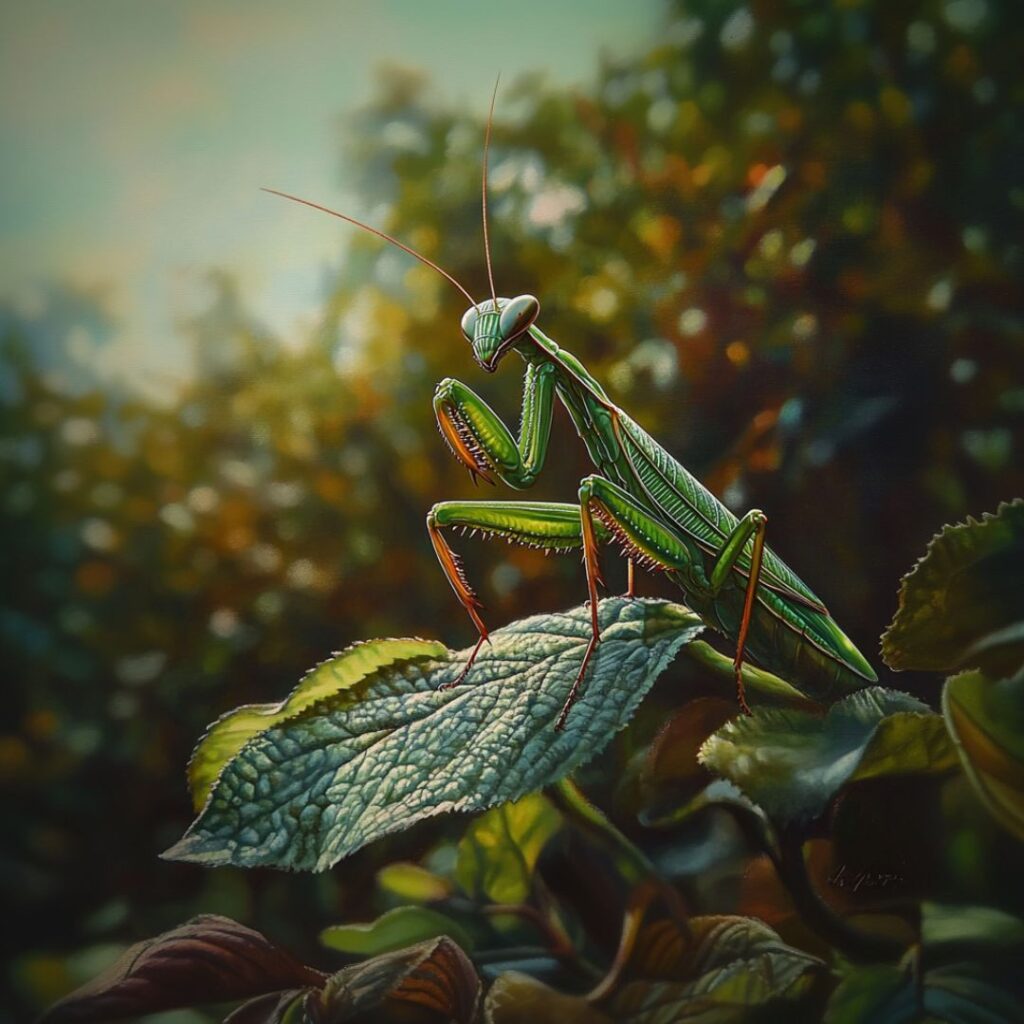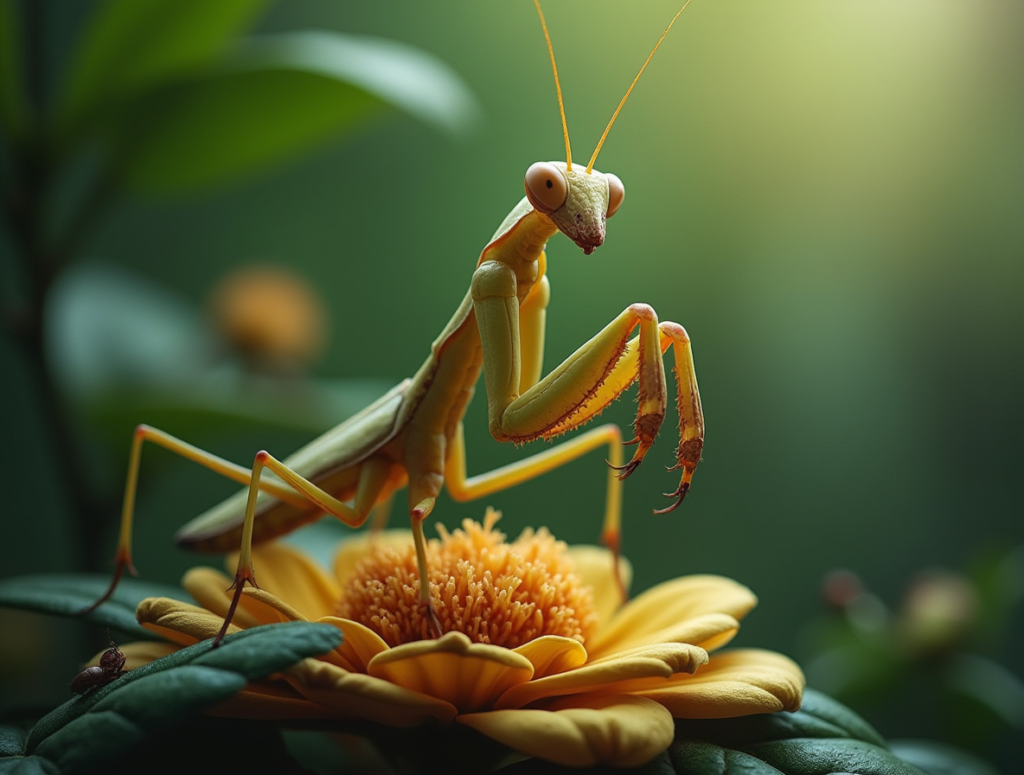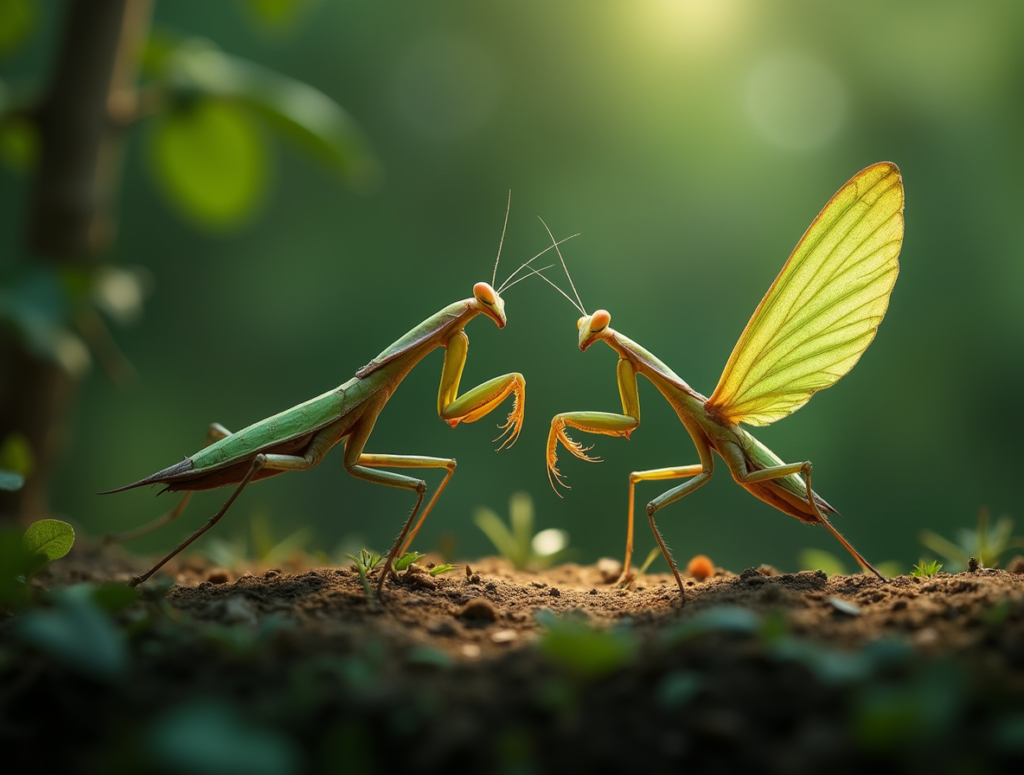Home » Invertebrates » The Secret Life of Praying Mantises: Nature’s Tiny Aliens

A praying mantis can turn its head 180 degrees while watching you – the only known insect capable of this spine-tingling feat. These remarkable creatures have survived on Earth for over 140 million years, outliving the dinosaurs and evolving into some of the most fascinating predators in our gardens.

I’ll never forget the first time I spotted a praying mantis in my garden. For several minutes, what I thought was a moving twig had me completely fooled! These incredible insects come in over 2,400 species worldwide, ranging from the tiny orchid mantis (about the size of your thumbnail) to the Chinese mantis that can grow longer than your phone.
Some mantids look exactly like flowers, leaves, or bark. The Malaysian orchid mantis is so convincing that scientists have found it actually attracts more pollinating insects than real orchids do. Nature’s deception at its finest.
Those distinctive front legs? They snap shut in just 50-70 milliseconds – so fast that they’re barely visible to the human eye. Their stereo vision is unmatched in the insect world, with two large compound eyes and three smaller simple eyes that can detect even the slightest movement.
Here’s what makes them truly extraordinary hunters:

Let’s talk about that famous mating ritual. While it’s true that females sometimes eat their mates, it happens in less than 30% of natural encounters. In fact, this behavior is more common in laboratory settings where the mantids can’t escape each other.
What’s really fascinating is their courtship dance. Males approach females with a delicate swaying motion, almost like they’re leaves blown by the wind. It’s both beautiful and nerve-wracking to watch! Some species even display vibrant colors during courtship that are normally hidden under their wings.

Want to attract these beneficial predators to your garden? Here’s what works:
These fascinating insects are completely harmless to humans and act as natural pest control. A single mantis can eat up to 20 flies and mosquitoes in a day. In my vegetable garden, they’ve become my most reliable allies against aphids and caterpillars. Talk about an efficient garden helper!
Scientists are now studying mantis vision to improve robot technology and automated systems. Their unique eye structure and rapid processing abilities could revolutionize everything from self-driving cars to surgical robots.
Urban development and pesticide use threaten mantis populations worldwide. Creating mantis-friendly spaces in our gardens isn’t just good for pest control – it’s essential for preserving these remarkable creatures for future generations.
Next time you spot one of these alien-like creatures in your garden, take a moment to observe it. You might just witness one of nature’s most sophisticated hunters in action. Just don’t move too quickly – you’re being watched by one of the most remarkable predators on Earth.
Sign up for our newsletter and receive the next story before it is lunched
Our blog is made with love to give you advice on how to take care of your beloved pets and to help you learn everything about their stories